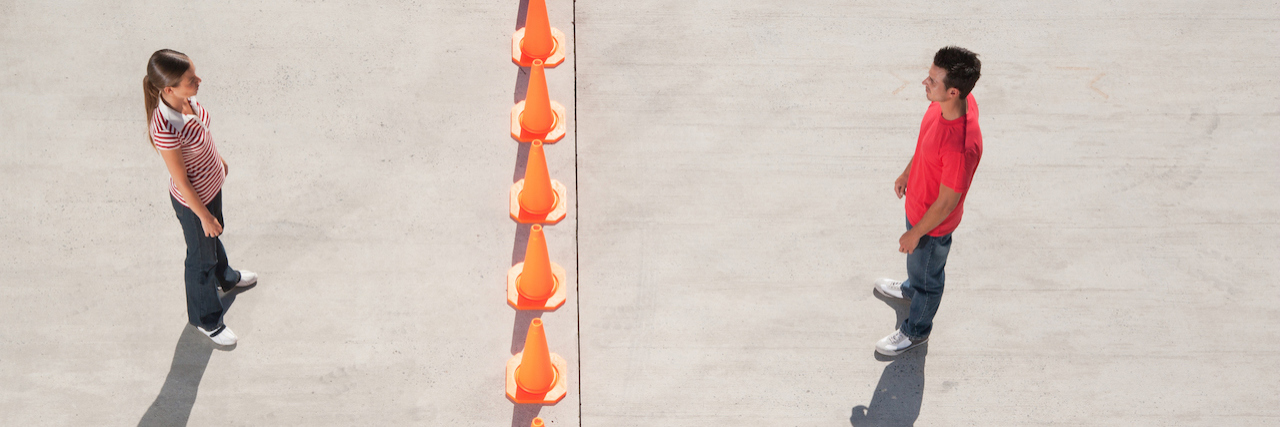Disneyland in California is closed. The NBA suspended its basketball season. Schools and universities are sending students home and taking classes online. New York canceled Broadway shows for a month and events, from music festivals and tours to conferences are canceled or postponed. All of these measures are being taken to encourage social distancing and slow the spread of COVID-19.
What Is COVID-19?
The new-to-humans coronavirus (COVID-19) affects your lungs and respiratory system, causing symptoms such as a fever, cough and shortness of breath. On average, it takes five days for symptoms to show up after you’ve been infected, and symptoms can range from mild to severe. Currently, there is no cure or vaccine against the virus and the average death rate is between 3 to 4%.
Now that governments, businesses, events and organizations all around the world are taking serious action, it’s time to think seriously about doing your part to prevent the spread of COVID-19. We can’t stop its progress, but we can mitigate its impact.
While sometimes it’s hard to take a deluge of warnings from officials and the media seriously, practicing social distancing during this COVID-19 outbreak can mean life-or-death for thousands of people.
What Is Social Distancing?
Social distancing is an effort to reduce your interaction with other people to slow the spread of an infectious disease. COVID-19 primarily spreads via respiratory droplets from close contact or contaminated surfaces. By limiting the number of people you have contact with, even casually walking down the sidewalk, it prevents the virus from spreading.
“Prevention of exposure to the virus is the best way of preventing people from getting sick,” Negin Hajizadeh, M.D., pulmonary and critical care physician and assistant professor at The Feinstein Institutes for Medical Research, told The Mighty. She added:
Most people are expected to get mild illness that does not require hospitalization. However, due to the rapidity of the spread, for the estimated 20% of people who do need hospitalization this will result in large numbers of people needing to go to the hospital. If we can spread this number out over time we will have better availability of resources.
What’s the Point of Social Distancing?
Social distancing serves several important functions to reduce the impact of COVID-19. By slowing the spread of the infection, it helps protect people who are at higher risk for more severe illness or death, including the elderly and those who are immunocompromised. Even if you’re not sick, you can still carry the disease without knowing it. Social distancing is about protecting not just yourself, but everyone in your community.
Social distancing also helps communities “flatten the curve,” a visual way to understand how this strategy can help reduce the impact of the virus. Flattening the curve and slowing the spread allows the health care system to more adequately respond to an influx of patients. In Italy, for example, the influx of COVID-19 cases overwhelmed the country’s medical facilities. Italy instituted a lockdown to implement social distancing, but the health care system is still facing a crisis due to a high number of patients.
“‘Flattening the curve’ means changing the trajectory of an epidemic so that the rate of new cases is low enough to avoid overwhelming health care resources,” Michael B Grosso, M.D., medical director at Huntington Hospital in Long Island, New York, told The Mighty. “The idea is that even if every person who was going to fall ill still does, simply slowing the spread of an infection reduces the height of the peak — the maximum number of new cases happening at the same time — thus, flattening the curve.”
Our #FlattenTheCurve graphic is now up on @Wikipedia with proper attribution & a CC-BY-SA licence. Please share far & wide and translate it into any language you can! Details in the thread below. #Covid_19 #COVID2019 #COVID19 #coronavirus Thanks to @XTOTL & @TheSpinoffTV pic.twitter.com/BQop7yWu1Q
— Dr Siouxsie Wiles (@SiouxsieW) March 10, 2020
How to Practice Social Distancing
The Centers for Disease Control and Prevention (CDC) currently recommends keeping 6 to 10 feet between yourself and others as much as possible. Many states have banned large gatherings of more than 250 people. Even if you’re in a small group, experts recommend keeping at least 6 feet between people and practicing good hygiene, especially washing your hands often.
The CDC also recommends:
- Cancel travel plans
- Stay home when you are sick
- Limit your movement within and outside your community
- Reduce your number of visitors
- Work from home if possible
- Transition meetings and gatherings online
- Try to visit grocery stores and other public establishments at less-crowded times
- Keep washing your hands
The Takeaway
If you’re struggling due to the coronavirus and the changes we’re all adjusting to, know you’re not alone. It’s disappointing when events or gatherings are canceled but these actions are temporary and save lives. It’s important to remember we all have a role to play to keep each other safe.
“Social distancing in no way should imply forgetting to help one another when needed,” said Hajizadeh, adding:
This is a time for us to consider the welfare of our entire communities. What we do can make a difference even though it seems as though this outbreak is bigger than us. Even if we are inclined to care for ourselves and our families only, we can only overcome this virus if we work as a community together.
Header image via Martin Barraud/Getty Images

